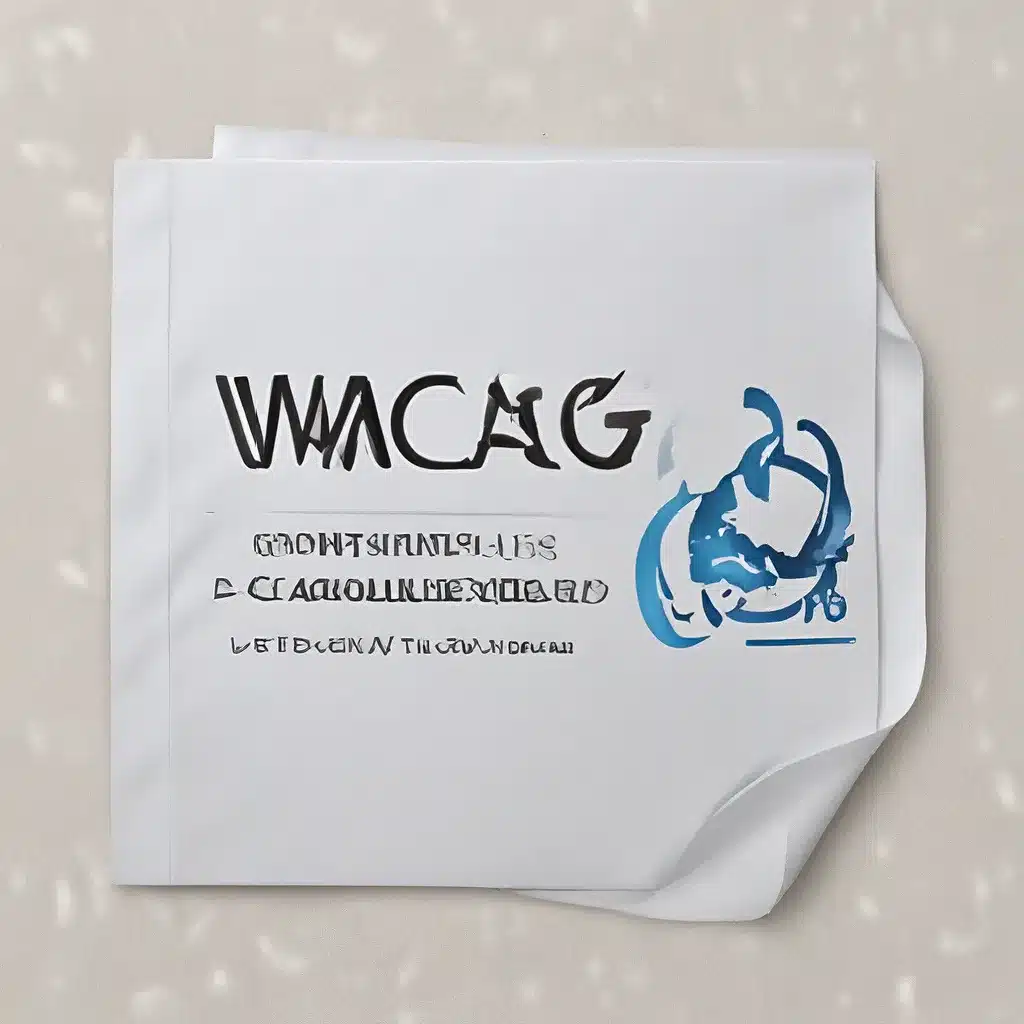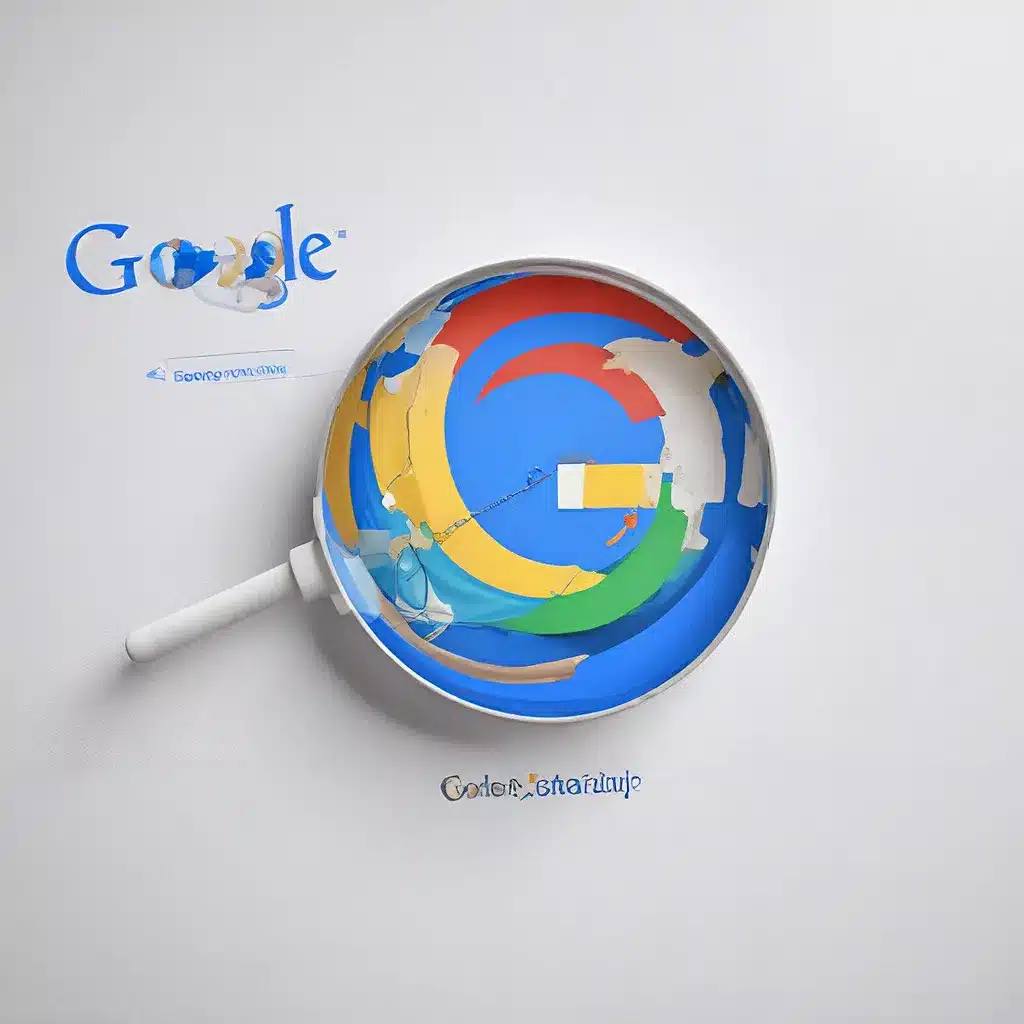
Understanding the Importance of Web Accessibility
In today’s digital landscape, where the internet has become an integral part of our daily lives, ensuring that web content is accessible to individuals with disabilities is crucial. The Web Content Accessibility Guidelines (WCAG) have emerged as the international standard for web accessibility, providing a comprehensive set of guidelines to help web designers and developers create inclusive online experiences.
The WCAG 2.1 standard, released in 2018, represents a significant step forward in addressing the evolving needs of users with a wide range of disabilities, including those with visual, auditory, motor, and cognitive impairments. By adhering to these guidelines, web content creators can ensure that their websites and applications are accessible to the broadest possible audience, enabling everyone to access and interact with digital information and services effectively.
Compliance with WCAG 2.1 is not just a matter of legal compliance; it’s a reflection of a company’s commitment to inclusivity and a recognition that accessibility is a fundamental right. In many regions, laws and regulations mandate that public-facing websites and digital services meet certain accessibility standards, making WCAG 2.1 compliance a critical requirement for organizations.
Moreover, the benefits of accessible web design extend beyond legal obligations. Accessible websites are typically more user-friendly, intuitive, and easier to navigate, providing a better experience for all users, regardless of their abilities. This, in turn, can lead to increased engagement, higher user satisfaction, and improved brand reputation.
Understanding the WCAG 2.1 Guidelines
The WCAG 2.1 standard is organized around four fundamental principles: Perceivable, Operable, Understandable, and Robust. Each principle is further divided into guidelines, which are then supported by testable success criteria.
-
Perceivable: This principle ensures that web content is presented in a way that users can easily perceive it. This includes providing text alternatives for non-text content, such as images and videos, and ensuring that content is easily distinguishable from its background.
-
Operable: The operable principle focuses on ensuring that users can navigate and interact with web content using a variety of input methods, including keyboard, touch, and voice. This includes providing clear, visible focus indicators and ensuring that time-based media can be paused or stopped.
-
Understandable: The understandable principle aims to make web content and functionality easy to comprehend. This includes using clear and concise language, providing clear instructions, and ensuring that content and functionality are predictable.
-
Robust: The robust principle ensures that web content is compatible with a wide range of user agents, including assistive technologies. This includes ensuring that web content can be interpreted reliably by different user agents and that it remains accessible as technologies evolve.
Each success criterion within the WCAG 2.1 guidelines is assigned a level of conformance: A, AA, or AAA. The A level represents the minimum requirements for web accessibility, while AA and AAA levels provide increasingly stringent guidelines for organizations that want to go above and beyond the basic requirements.
The Benefits of WCAG 2.1 Compliance
Adhering to the WCAG 2.1 guidelines offers a wide range of benefits for web content creators, users, and organizations alike:
-
Inclusive User Experience: By following WCAG 2.1 guidelines, web content becomes more accessible to users with disabilities, providing them with an equal opportunity to access information and interact with digital services.
-
Improved Search Engine Optimization (SEO): Many of the WCAG 2.1 principles, such as providing text alternatives for non-text content and using clear, semantic markup, also align with best practices for search engine optimization. This can result in improved visibility and discoverability of web content.
-
Reduced Maintenance and Development Costs: Designing for accessibility from the outset can often be more cost-effective than retrofitting accessibility features later in the development process. Additionally, accessible websites tend to be more robust and easier to maintain over time.
-
Broader Audience Reach: By creating accessible web content, organizations can expand their potential customer base and reach a wider audience, including individuals with disabilities who may have been previously excluded from accessing their digital offerings.
-
Legal Compliance: In many regions, WCAG 2.1 compliance is a legal requirement for public-facing websites and digital services, ensuring that organizations avoid costly lawsuits and fines for non-compliance.
-
Enhanced Brand Reputation: Demonstrating a commitment to accessibility and inclusion can enhance an organization’s brand reputation, positioning it as a socially responsible and forward-thinking entity.
Implementing WCAG 2.1 Compliance
Achieving WCAG 2.1 compliance is a multi-faceted process that requires a holistic approach, involving both technical and non-technical considerations. Here are some key steps to implement WCAG 2.1 compliance:
-
Conduct an Accessibility Audit: Begin by evaluating the current state of your web content’s accessibility, using automated tools and manual testing to identify areas that require improvement.
-
Develop an Accessibility Policy: Establish a clear, organization-wide policy that outlines your commitment to accessibility and the specific steps you will take to ensure WCAG 2.1 compliance.
-
Provide Accessibility Training: Educate your web development, design, and content teams on the WCAG 2.1 guidelines and best practices for creating accessible web content.
-
Integrate Accessibility into the Design and Development Process: Ensure that accessibility considerations are baked into the earliest stages of your web project planning and execution, rather than being an afterthought.
-
Implement Accessibility Testing: Regularly test your web content using a combination of automated tools and manual testing to verify compliance with WCAG 2.1 guidelines.
-
Continuously Monitor and Improve: Regularly review and update your web content to address any changes in technology, user needs, or WCAG 2.1 guidelines, ensuring that your website remains accessible over time.
The Future of Web Accessibility: WCAG 3.0
As technology continues to evolve, the need for more comprehensive and flexible accessibility standards has become increasingly apparent. The W3C (World Wide Web Consortium) is currently working on the development of WCAG 3.0, the next iteration of the Web Content Accessibility Guidelines.
WCAG 3.0 is designed to address the shortcomings of the current WCAG 2.1 standard and provide a more robust and future-proof framework for web accessibility. Some of the key features of WCAG 3.0 include:
-
Expanded User Needs: WCAG 3.0 aims to address a wider range of user needs, including those with cognitive, learning, and neurological disabilities, as well as users with temporary or situational impairments.
-
Technology-Agnostic Approach: The guidelines in WCAG 3.0 will be more technology-agnostic, allowing them to be applied to a broader range of digital content and platforms, including emerging technologies like virtual and augmented reality.
-
Outcomes-Based Approach: WCAG 3.0 will shift away from the success criteria-based model of WCAG 2.1 and instead focus on user-centric outcomes, making it easier for web content creators to understand and implement the guidelines.
-
Continuous Maintenance: WCAG 3.0 is designed to be more easily updated and maintained, allowing it to stay relevant and responsive to the rapidly changing landscape of web technologies and user needs.
As the web accessibility landscape continues to evolve, organizations that prioritize WCAG 2.1 compliance today will be well-positioned to transition to the upcoming WCAG 3.0 standard, ensuring that their web content remains accessible and inclusive for years to come.
Conclusion
In today’s digital age, where the internet has become an integral part of our daily lives, ensuring web accessibility is not just a legal or ethical obligation, but a strategic imperative for organizations seeking to reach and engage a diverse audience. By adhering to the WCAG 2.1 guidelines, web content creators can create inclusive and user-friendly experiences that benefit users of all abilities, while also reaping the broader benefits of improved search engine optimization, reduced development and maintenance costs, and enhanced brand reputation.
As the web accessibility landscape continues to evolve, with the impending release of WCAG 3.0, organizations that prioritize accessibility today will be well-positioned to stay ahead of the curve and ensure that their digital offerings remain accessible and inclusive for years to come. By embracing the principles of WCAG 2.1 and preparing for the future with WCAG 3.0, web content creators can play a pivotal role in building a more inclusive and accessible digital world.
stronyinternetowe.uk is committed to helping organizations achieve and maintain WCAG compliance, providing expert guidance, tools, and resources to ensure that their web content is accessible to all users.




